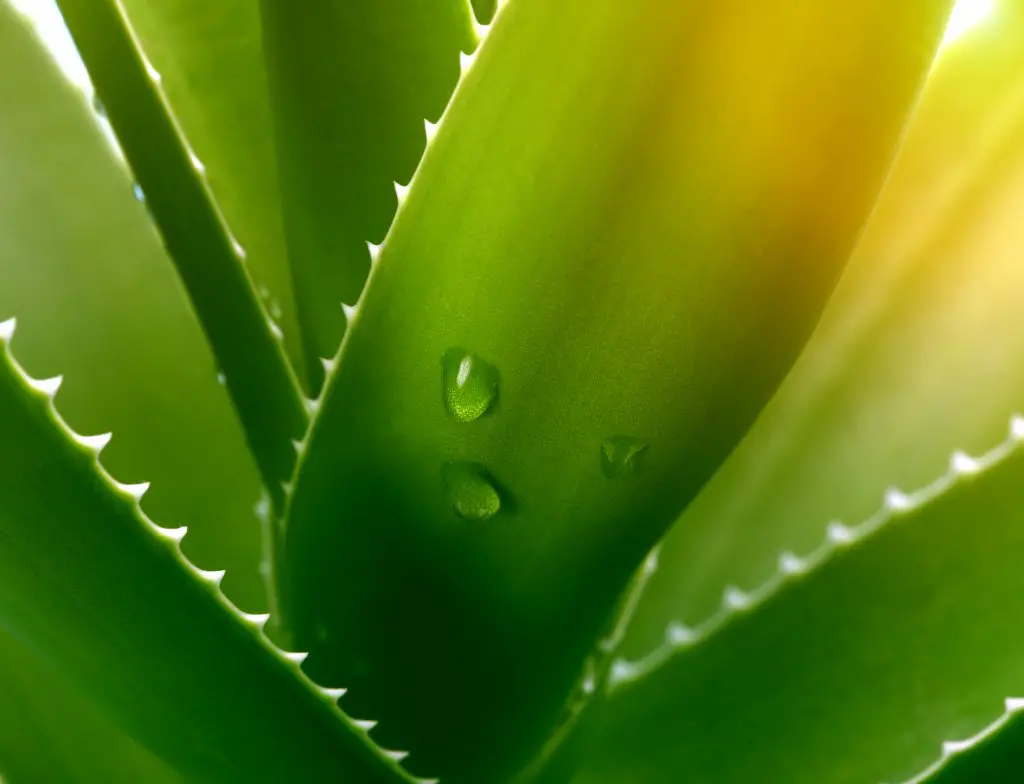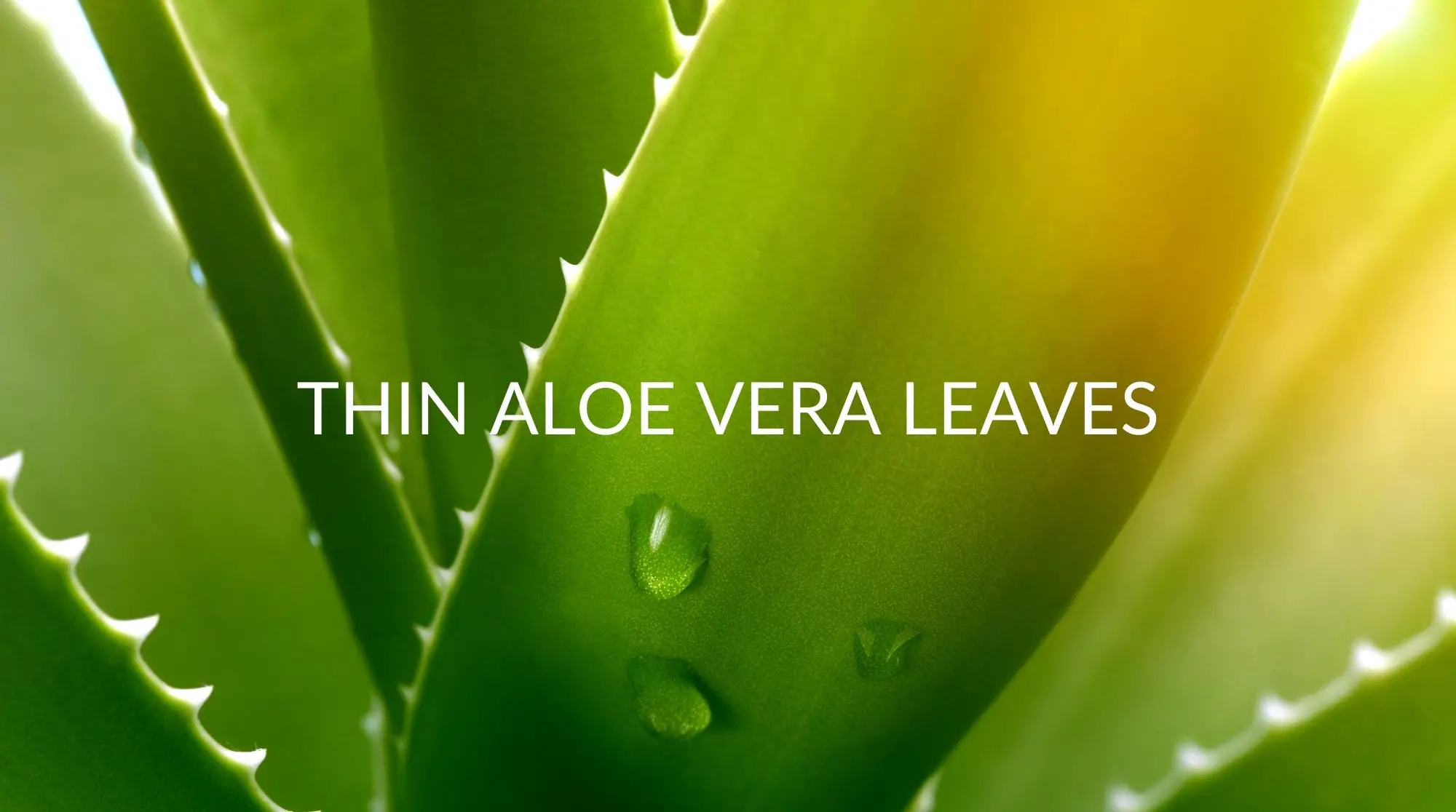We all want our plants to look as vibrant and healthy as possible, but it can be hard to tell what you need to do when something doesn’t look right. One of the main attractions of an aloe vera plant is how thick and plump the leaves are, but why do you sometimes end up with thin aloe vera leaves?
Usually, thin aloe vera leaves are a result of incorrect amounts of water, insufficient sunlight, an unsuitable container, or the wrong temperature. Most of the factors that lead to your aloe’s leaves becoming thin or withered can be solved with a couple of simple changes, as long as you know what you’re doing.
Read ahead in this article to figure out exactly why the leaves on your aloe vera are looking thin, dry, or droopy and what you can do to get the plant looking plump and healthy again.
Why Are My Aloe Vera Leaves Thin?
There are several things that can cause an aloe vera plant’s leaves to become thin and dry. Before you can start addressing the issue, you will need to figure out the cause.
Underwatering
The first thing that probably comes to mind when you see thin, dry leaves on your aloe plant is that it might not be getting enough water. The plumpness of an aloe’s leaves is a direct result of how much water the plant is storing, so if it is not getting enough water from the soil, then its leaves will become dry and limp.
To get a good indication of whether or not your aloe is thirsty, you can check the soil. If the soil has completely dried out, then your plant is probably in need of a drink.
Overwatering
If you see thin leaves on your aloe vera, don’t jump to extra watering straight away, though. Overwatering can actually cause as much of an issue as underwatering. If the roots of your aloe plant rest in water for too long, they can start to rot, which will eventually kill the plant.
If overwatering is your problem, you might see yellowing or browning of the leaves, and the soil at the bottom of the pot will still be soggy. Typically, overwatered aloe leaves are thin but soft and mushy rather than dry.

Not Enough Sunlight
One of the other important fundamentals for any plant, besides water, is adequate sunlight. Your aloe uses sunlight to create energy through photosynthesis, so if it’s not getting enough, it will start to droop. A lack of sunlight also often causes aloe vera plants to grow long and spindly as they search for more light.
Too Much Sunlight
Although it needs light to survive, too much can also be a bad thing. If your aloe vera is getting too much sunlight (particularly in hot weather), the leaves can start to dry out. Thin, brown leaves may be the result of your aloe not getting enough shade throughout the day.
Cold Temperatures
In general, aloe plants like warm temperatures as they are designed to thrive in arid environments. If temperatures drop below 50 degrees Fahrenheit, your aloe plant might start to turn brown/black and suffer from frost damage. This can be deadly if the cold weather continues for a long period.
Pot Too Small
It’s easy to forget that the size of your plant’s pot is really important. To stay healthy, your aloe vera needs enough space for its roots to grow. If the pot is too small and your aloe has started to outgrow it, it won’t get getting enough nutrition from the soil, and its leaves won’t be as plump and healthy as they should be.
Fungal Infection
If you see spots or sections of discoloration on the leaves of your aloe plant, it may be suffering from a fungal infection. You might also notice dents or a wilting of the leaves as well. Often, fungal infections are a result of overwatering and rotting around the root or stem, which then becomes infected.
How To Thicken Aloe Vera Leaves
Once you know the cause of any thinning on the leaves of your aloe vera plant, you can start taking steps to address the issue and get your aloe looking thick and healthy again. Some problems are more serious than others, but if you catch them early, your plant can usually be saved.
Increase Watering
If the soil in your aloe’s pot is parched and its leaves are thin and dry, then you probably need to increase the frequency with which you are watering. As soon as the soil becomes dry, the plant will start using the moisture inside of its leaves instead, causing them to shrivel up.
You will need to water more frequently during the hot summer months when the soil will dry out more quickly.
Reduce Watering
If your aloe vera’s leaves are thin but soft and mushy rather than dry, then you will need to reduce the amount of watering that you are doing. It can be hard to bring a plant back once root rot has fully set in, so you want to catch it early. Improving the level of drainage in your aloe’s pot and soil will also help.
Try to carefully remove any leaves that have started to die off and clear away any organic matter that might be rotting in the soil.
Provide More Sunlight
A good way to increase the thickness of your aloe’s leaves is to get the plant into a location where it will receive more sunlight throughout the day. Around three or four hours of direct sunlight in the morning and indirect sunlight throughout the afternoon would be ideal.
Don’t forget that too much sunlight in the warmer hours of the day can cause the plant’s leaves to become burnt and cause the tips to turn brown.
Increase the Temperature
When the weather gets cold, you may need to bring your aloe vera plant inside to avoid frost damage or freezing issues. Maintaining a nice warm temperature will help your aloe to grow healthily and thrive.
Repot Your Aloe
To get the maximum amount of healthy growth, you will need to repot your aloe plant as it grows, providing more space for the roots to expand and giving it extra nutrition from the fresh soil. Most aloe vera plants will need repotting about once every two or three years.
Be very careful not to cause any root damage while you are repotting. You will also need to allow the plant to readjust to the new soil before making any other changes, or it can cause shock.
Treat A Fungal Infection
If certain areas of your plant are being affected by a fungal infection, it can be a little more complicated to treat. Removing infected leaves will help but you may need to apply a fungicide as well.
Different treatments will be more effective for different infections, so you should try to identify the exact fungus that is causing problems for your plant before trying a fungicide.
How To Prevent Aloe Vera Thin Leaves
It’s a lot easier to prevent thin leaves from occurring in the first place than it is to revitalize a plant that is already struggling. The best thing that you can do for your plant is to ensure that you know what it needs in order to grow healthily and well.
Choose a Porous, Well-Draining Pot
Pots made from a porous material, like terracotta, are much better for aloe vera plants than materials like plastic, as they will allow the soil to dry out thoroughly between watering. You are much less likely to have problems with root rot and overwatering when you use a porous container.
Make sure that the pot you use has adequate drainage holes so that water doesn’t collect and stagnate around the roots.
Let Your Plant Settle In
If you’ve just brought home a new aloe vera plant, or have just repotted an older one, let them settle for at least a week before watering. Fresh soil will contain a lot of moisture, and your plant needs to get used to the new environment before taking on new water or moving to a new location.
Water Deeply But Infrequently
When you water your aloe plant, you need to make sure that the soil becomes thoroughly soaked. However, you also need to let the soil dry out before watering again. This can be a bit of a balancing act, but it is really important for the health of your plant.
Don’t water your aloe until the top third of the soil is completely dry. This will usually mean that you are watering about once every two or three weeks in the summer and every three or four weeks in the winter.
Provide Bright, Indirect Sunlight
The best place for your aloe vera plant to live will be an area where it is getting a good amount of bright sunlight throughout the day, but it is not sitting in direct light for too long. Too little light and it won’t grow healthily, but too much direct sun can cause burning and browning.
Don’t Let it Get Cold
Moving your plant around throughout the year can be a bit of a chore, but leaving an aloe vera outside over the winter may well kill the plant. The best temperatures for your aloe plant are between 55 and 80 degrees Fahrenheit, so they are generally happy indoors all year long.
Fertilize Occasionally
Adding fertilizer may seem like a quick way to get good growth from your plant, but too much can cause problems too. Don’t fertilize more than once a month, and only during the spring and the summer, when your plant will be in its growth phase.
Repot
It’s a job that many plant owners forget or neglect, but your aloe vera will need repotting as it grows. If you want your aloe to be thick and healthy, then you want it to be getting bigger – which will mean that it will eventually outgrow its space.
Most aloe plants should be moved to a new pot every three or four years.
FAQ
Why Do My Aloe Plants Have Drooping and Thinning Leaves?
The most common causes of thin, drooping leaves are inadequate sunlight or underwatering. Thin leaves are often lacking moisture, or they have grown longer and less thick in an attempt to get access to more light.
Recap: Thin Aloe Vera Leaves
More often than not, thin aloe vera leaves are the result of improper watering, inadequate levels of sunlight, incorrect temperatures, or the wrong container. It’s important that you try to figure out the exact cause of your aloe’s thin leaves before you try to solve the problem, or you might end up making things worse.
You might need to increase the amount that you are watering, or you may be watering too often. Your aloe might need to get more sun, or it may be overexposed to the light.
At the end of the day, most of the solutions for thin aloe vera leaves are pretty simple; you just need to identify what it is that your plant is lacking.



